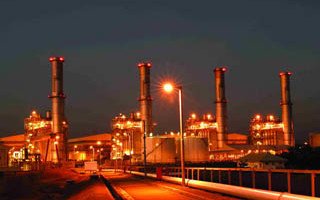First Gen – Power to the People

How an energy player will spare no expense for operational efficiency
First Gen is a leading power producer in the Philippines that utilizes clean sources of fuel to generate electricity. In addition to its portfolio of natural gas, hydro, wind and solar plants, it is also the largest geothermal power producer in the world with concession areas in the Philippines, Chile, Peru, Indonesia and Kenya.

Within the energy market, units of energy cannot be differentiated from one another. For this reason, companies compete by trying to sell the cheapest power possible. While most companies do this by keeping costs to a minimum, First Gen uses a different approach. Its business model is to instead prioritize the maximization of run-time or ‘availability’ of their power plants. Given the capital-intensive nature of the business, First Gen believes that it should spare no expense spreading these fixed costs over as long a period as possible.
Nowhere is First Gen’s business model philosophy aligned more effectively to its operations than in its largest power plant, Santa Rita. The natural gas-fired power plant has benefited from First Gen’s past, present and future initiatives to ensure its seamless operation.

Flexibility to ensure availability
Santa Rita runs on natural gas piped in from an offshore platform run by Shell. Because of their complexity, offshore platforms are occasionally shut down for weeks at a time for maintenance or unforeseen repair work. In order to maintain Santa Rita’s availability during these curtailments, First Gen invested in special engines that can also run on oil whenever natural gas is not available. This ensures that as long as Santa Rita has access to either type of fuel, it will be producing power.
A million-dollar buffer

While Santa Rita has a pipeline that delivers its natural gas from a local offshore platform, oil has to be ordered and shipped in from other countries. Oil deliveries require two weeks of lead-time to secure. This means that whenever Shell’s offshore platform shuts down without notice, Santa Rita is inactive until its order for oil arrives. In order to address this, First Gen decided to construct enormous tanks that could hold enough oil to power Santa Rita for two weeks, just enough until new shipments of oil could arrive.
Holding that much oil in reserve today costs the company close to $25 million in inventory for contingency fuel that is seldom used. Despite the enormous strain on its cash flow, First Gen is willing to pay millions for this buffer to ensure that Santa Rita always has a ready source of fuel.
Leave it to the experts

The Santa Rita plant was originally constructed by Siemens in 2000. Instead of operating the plant themselves, First Gen pays Siemens a premium to run Santa Rita for them. Despite costing them both money and operational control of the plant, First Gen believes that Siemens will be able to ensure the plant always runs at peak efficiency. In the words of First Gen President Francis Giles Puno, “If we buy a German car, we should get a German driver to drive it.”
In addition to paying Siemens to run the facility, First Gen mandates their German partner to constantly maintain and upgrade the power plant. Unlike many other players in the market, Siemens ensures the Santa Rita always has the latest upgrades, and runs as if it were brand new. This initiative is reflected in Santa Rita’s balance sheet wherein the book value of its power plant today is the same as it was in 2000, even after 15 years of depreciation.
Ensuring continuity
Finally, First Gen knows that Shell’s offshore platform – their sole supply of natural gas – will eventually dry up in 2024. The company is thus taking measures to develop infrastructure to secure additional natural gas and extend the life of Santa Rita. It is building the first liquefied natural gas (LNG) receiving terminal in the Philippines in order to be able to import natural gas from countries such as the United States.
While First Gen’s initiatives are certainly not without cost (large strains on working capital, premium payments made to Siemens, a reported $1 billion LNG terminal, etc.), the company is able to justify these large operational investments because they are aligned with its business model. In aiming to create value by maximizing the availability of its assets, First Gen is taking the non-traditional approach to offering the cheapest power in the market.
Sources:
First Gen Annual Report 2014: http://www.firstgen.com.ph/uploads/files/blurb-39_file-1230_17-a_for_2014.april_6_15_complete_file.pdf
First Gen Latest Quarterly Statements (3Q 2015): http://www.firstgen.com.ph/uploads/files/blurb-186_file-1287_17q_for_3q_2015.pdf
Energy Development Corporation Investor Relations Presentation: http://www.energy.com.ph/wp-content/uploads/2009/01/EDC-Presentation-Material-20150610-Website.pdf
Conversation with Emmanuel Singson, CFO and Valerie Dy Sun, Head of Investor Relations (January 2015)
First Gen Investor Relations Presentation (January 2015)
Siemens Presentation: http://www.energy.siemens.com/hq/pool/hq/energy-topics/publications/living-energy/pdf/issue-04/Living-Energy-4-O&M-in-the-Philippines.pdf
http://www.firstgen.com.ph/OurAssets.php?id=17
http://www.philstar.com/business/2015/09/28/1504589/first-gen-pursues-1-b-batangas-lng-terminal
http://www.siemens.com/press/en/pressrelease/?press=/en/pressrelease/2010/energy_service/ese201008114.htm
http://www.philstar.com/business/2015/05/25/1458415/smc-bid-malampaya-banked-gas
http://www.crossover.tractebel-engineering-gdfsuez.com/crossover7/turning-gas-top-clients/


